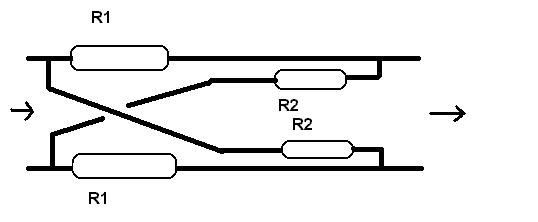Hi,
I made a line to micpre pad to use my Great River MP2NV for analog summing. Dan Kennedy suggested this on another forum:
My (stupid) question is: What is that 470ohm resistor doing?
Thanks
Richard
I made a line to micpre pad to use my Great River MP2NV for analog summing. Dan Kennedy suggested this on another forum:
Out L Hot-----2.2K --------------NV L In Hot
.....................................|
...................................470
.....................................|
Out L Cold----2.2K--------------NV L In Cold
Other channel same as the first:
Out R Hot-----2.2K --------------NV R In Hot
......................................|
....................................470
......................................|
Out R Cold----2.2K--------------NV R In Cold
My (stupid) question is: What is that 470ohm resistor doing?
Thanks
Richard



